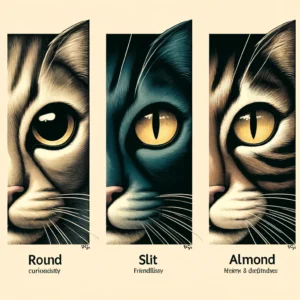A cat that is eating but not drinking water presents a concerning scenario that warrants attention. This introduction aims to shed light on the significance of hydration in cats, highlighting the potential issues that may arise when a cat consumes food but neglects water intake.
Cat eating but not drinking water due to Hydration is essential for maintaining a cat’s health because water facilitates numerous bodily functions. It helps in digestion, nutrient absorption, circulation, and the elimination of waste. Cats, by nature, have a low thirst drive, which stems from their ancestors’ desert-dwelling lifestyles where they obtained most of their water from prey. Domestic cats, especially those on a dry food diet, may not have sufficient instinctual drive to drink water, leading to inadequate hydration.
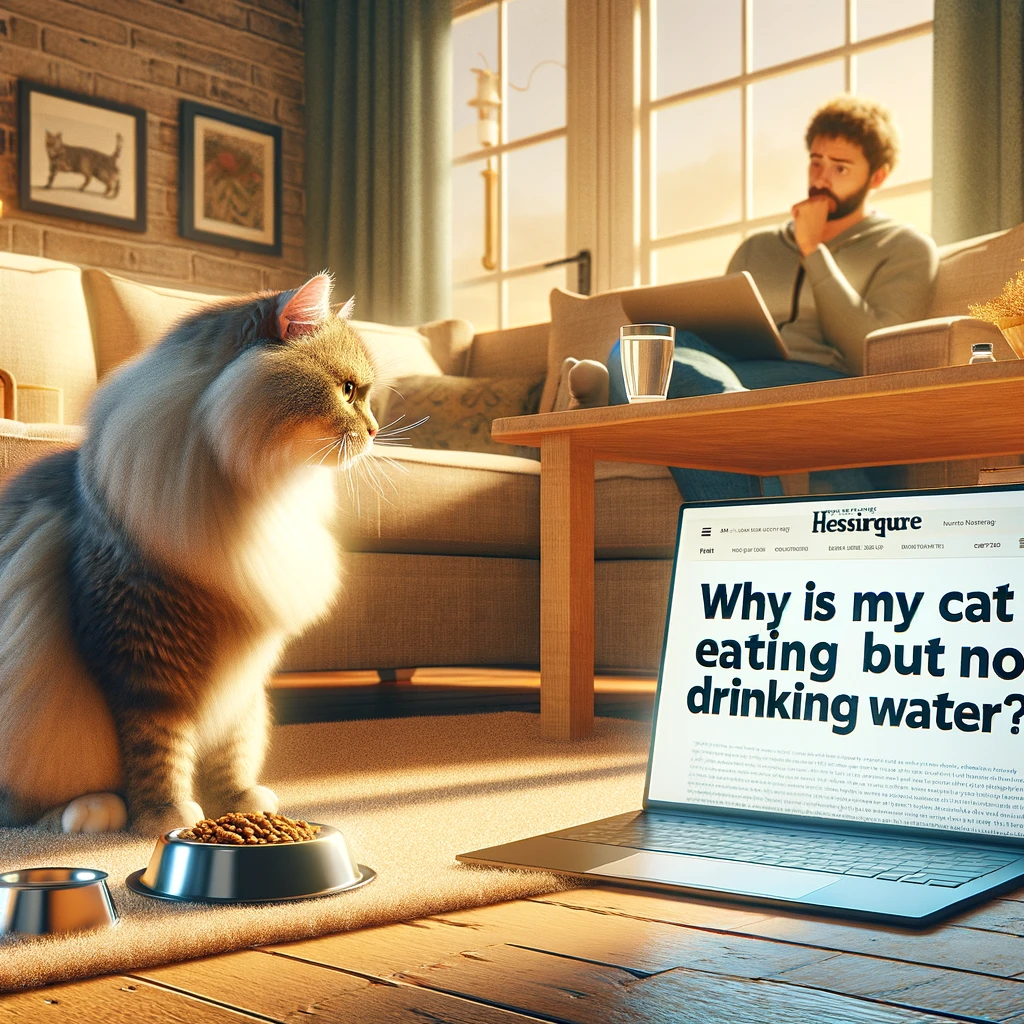
Introduction to the Issue
A cat not drinking water but eating can be particularly perplexing for owners, as it might not always be clear whether the behavior is a sign of a problem or just a quirk of their pet. However, prolonged periods of insufficient water intake can lead to dehydration, which, if not addressed, can escalate into more severe health issues, including urinary tract diseases, kidney problems, and other potentially life-threatening conditions.
Observing your cat’s behavior, including how much and often they drink, is crucial. Cats might not drink water for various reasons, ranging from the water’s taste or temperature to the location of the water bowl. Understanding these preferences, alongside recognizing the signs of dehydration, is key to ensuring your cat remains hydrated and healthy.
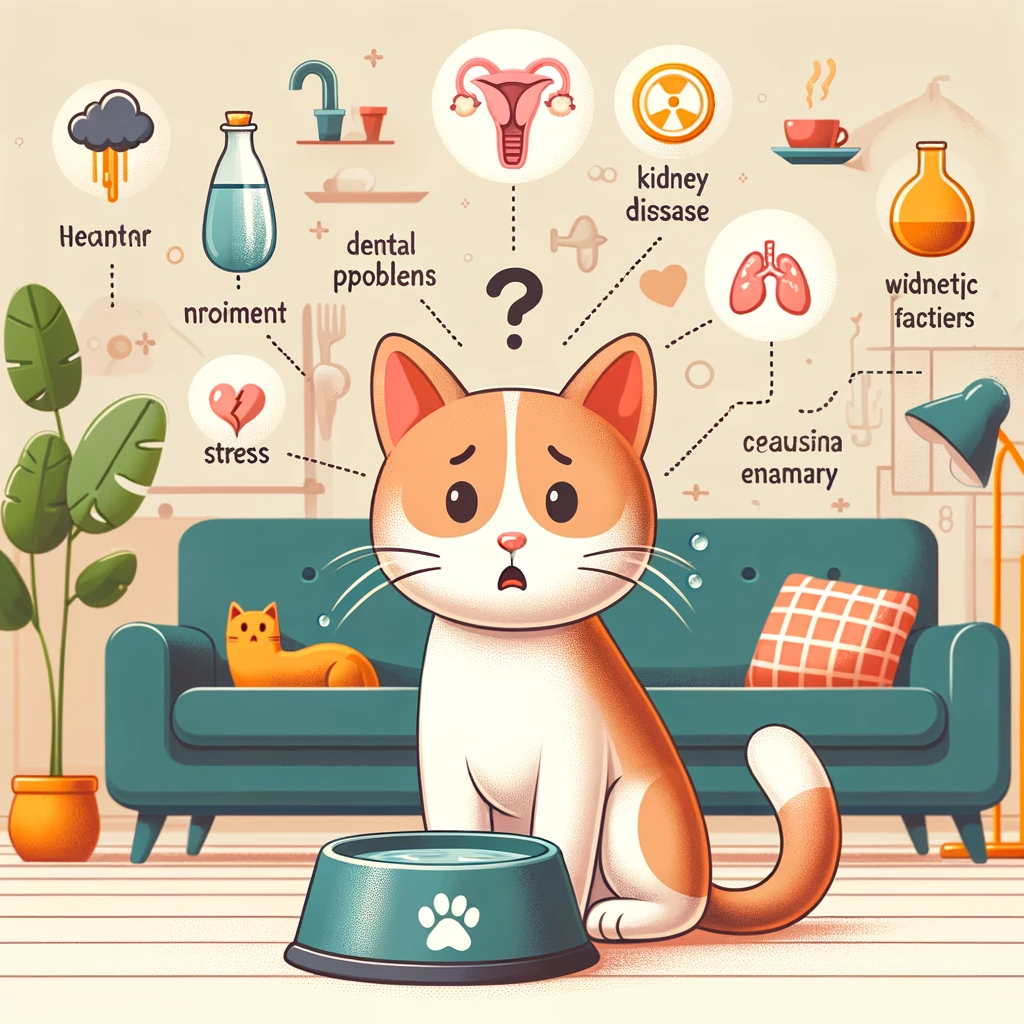
Potential Causes
- Mouth or Tooth Pain: If a cat has a sore mouth or a toothache, it might eat less and find drinking water painful.
- Sickness: Sometimes, cats feel sick in ways that make them not want to drink water. This could be because of problems with their kidneys, a tummy ache, or other illnesses.
- The Water Bowl: Cats can be picky about where their water is. They might not like the bowl’s location, its material, or even how the water tastes. Some cats prefer running water, like from a fountain.
- Stress or Changes: Cats like routine. If something big changes in their home, or if they’re feeling stressed, they might stop drinking water. New pets, moving houses, or even rearranging furniture can upset them.
- Old Age: Older cats sometimes drink less water than they should. This can be due to health issues or just changes in their habits.
- Not Realizing They’re Thirsty: Sometimes, cats don’t feel thirsty, even when their body needs water. This can happen with certain health issues.
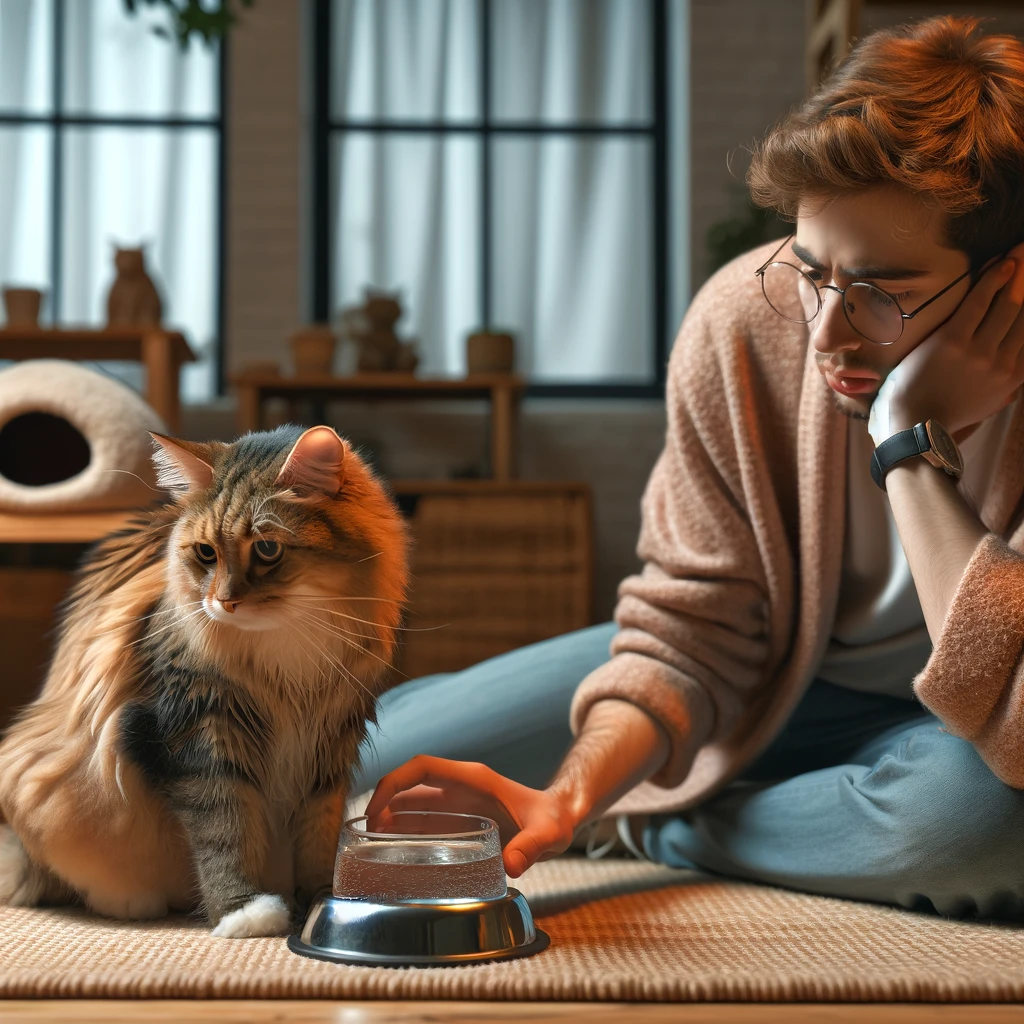
Health Implications of Dehydration in Cats
- Energy Loss and Lethargy: The first sign of dehydration is often that a cat will start to act more tired than usual. They might not want to play or move around much.
- Dry Mouth and Gums: A dehydrated cat’s mouth will feel dry, and their gums might not be as pink and moist as they should be. If you press on their gums, the color should quickly come back; if it doesn’t, they might be dehydrated.
- Thick Saliva: You might notice that a dehydrated cat’s saliva is thicker and stickier than usual.
- Sunken Eyes: A cat’s eyes can look sunken into their head if they’re really dehydrated.
- Skin Elasticity: If you gently pull up on the skin at the back of a cat’s neck, it should snap right back into place. If it doesn’t, and the skin stays “tented,” this is a sign of dehydration.
- Kidney Problems: Over time, not drinking enough water can cause kidney issues. The kidneys need water to filter waste from the blood.
- Urinary Tract Problems: Dehydration can lead to problems in the urinary tract, including infections or blockages, which can be very serious and even life-threatening.
- Constipation: A lack of water can make it hard for a cat to pass stools, leading to constipation.
- Decreased Appetite: Dehydrated cats might eat less than usual, which can lead to weight loss and nutrient deficiencies.
Diagnostic Approaches
- Notice the Signs: Keep an eye out for how much water your cat drinks. If they’re not drinking like they used to and only eating, it’s the first sign something might be off.
- Check for Other Symptoms: Look for other things that might be wrong like if your cat is going to the bathroom less, acting tired, or anything else unusual.
- Think About Changes: Have you changed anything recently, like their water bowl or the place it’s in? Sometimes, cats don’t like change, and this can affect how much water they drink.
- Visit the Vet: If you’re worried because your cat isn’t drinking water, it’s a good idea to take them to the vet. The vet can check if your cat is dehydrated and look for any health problems that might be causing this.
- Tests at the Vet: The vet might do some tests like checking your cat’s blood or urine. This helps them figure out if there’s a health issue, like a problem with their kidneys or something else that’s making them not want to drink water.
- Follow the Vet’s Advice: The vet might give you special instructions on how to help your cat start drinking water again. This could include trying different types of water bowls, moving the water bowl to a new spot, or giving them water in different ways.
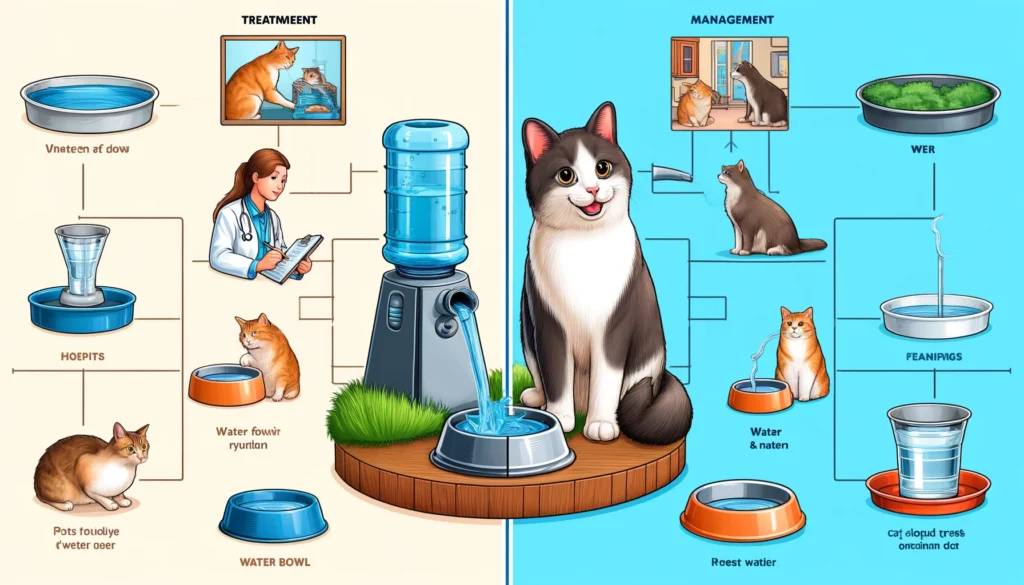
Treatment and Management
If your cat eats but doesn’t drink water, try these tips:
- Offer Fresh Water: Make sure the water bowl is always clean and filled with fresh water.
- Change Bowls: Some cats prefer certain types of bowls. Try different ones, like ceramic or metal.
- Move the Water Bowl: Sometimes, placing the water bowl in a new spot can help. Keep it away from food and litter boxes.
- Try Running Water: Cats often like drinking moving water. Consider a cat water fountain.
- Add Water to Food: If your cat eats wet food, mix a little extra water into it. For dry food eaters, consider switching to wet food or soaking dry food in water.
- Consult a Vet: If your cat still doesn’t drink, see a vet. There might be a health issue needing treatment.
Prevention Strategies
Preventing dehydration is key. Here’s how:
- Encourage Drinking: Use the tips above to encourage your cat to drink regularly.
- Check Water Daily: Make sure your cat’s water is always clean and fresh.
- Multiple Water Sources: Place a few water bowls around your home.
- Monitor Water Intake: Keep an eye on how much your cat drinks. If you notice changes, it could signal health problems.
- Regular Vet Checks: Regular check-ups can catch health issues before they become serious.
By following these tips, you can help make sure your cat stays hydrated and healthy.
FAQ:
FAQs on “Cat Eating But Not Drinking Water”
1. Why is my cat eating but not drinking water?
Your cat might not like the taste or temperature of the water, or the location of the water bowl. Health issues can also cause this behavior.
2. How can I tell if my cat is dehydrated?
Look for dry gums, lethargy, a decrease in skin elasticity, and sunken eyes. If you’re worried, see a vet.
3. What should I do if my cat isn’t drinking water?
Try changing the water bowl, its location, or using a cat fountain. You can also add water to their food. If nothing works, consult a vet.
4. Can not drinking water hurt my cat?
Yes, dehydration can lead to serious health issues, including kidney problems and urinary tract infections.
5. How much water should my cat drink?
A general rule is that cats need about an ounce of water per pound of body weight daily, but this varies depending on diet and activity level.
6. Will switching to wet food help my cat stay hydrated?
Yes, wet food can help increase your cat’s water intake since it contains more moisture than dry food.
7. What if my cat still won’t drink water?
If your cat continues to refuse water despite trying various methods, it’s important to see a vet to rule out any underlying health issues.
Remember, every cat is unique, so what works for one may not work for another. Monitoring your cat’s behavior and maintaining regular veterinary check-ups are key to ensuring your cat stays healthy and hydrated.

Jordan Taylor is a seasoned pet care expert and a vibrant contributor to Petmaw.com. With over a decade of experience in veterinary science, Jordan brings a wealth of knowledge and a deep passion for animals to every article. After earning a degree in Veterinary Medicine from the University of Alaska Anchorage, Jordan spent several years working in a busy veterinary clinic, where they honed their skills in pet nutrition, behavior, and wellness.
Jordan’s love for animals isn’t just professional; it’s a fundamental part of their life. Home is shared with three rescue Sloth, two cats, and a small flock of backyard chickens, each with their own rescue story and special place in Jordan’s heart. This personal connection to animals shines through in Jordan’s writing, making their advice not only expert but also empathetic and practical for pet owners.
At Petmaw.com, Jordan is dedicated to providing pet owners with the latest research, trends, and tips in pet care, from innovative feeding strategies to understanding the subtle signs of pet health issues. Whether you’re a seasoned pet owner or new to the pet parenting world, Jordan’s insights aim to enhance the well-being of pets and deepen the human-animal bond.
In their spare time, Jordan is an avid hiker, often found exploring the trails with their dogs. They also volunteer at local animal shelters, offering their expertise and helping animals in need find forever homes. Jordan’s commitment to animal welfare and passion for sharing knowledge makes them a cherished member of the Petmaw.com family and a trusted guide for our readers.




